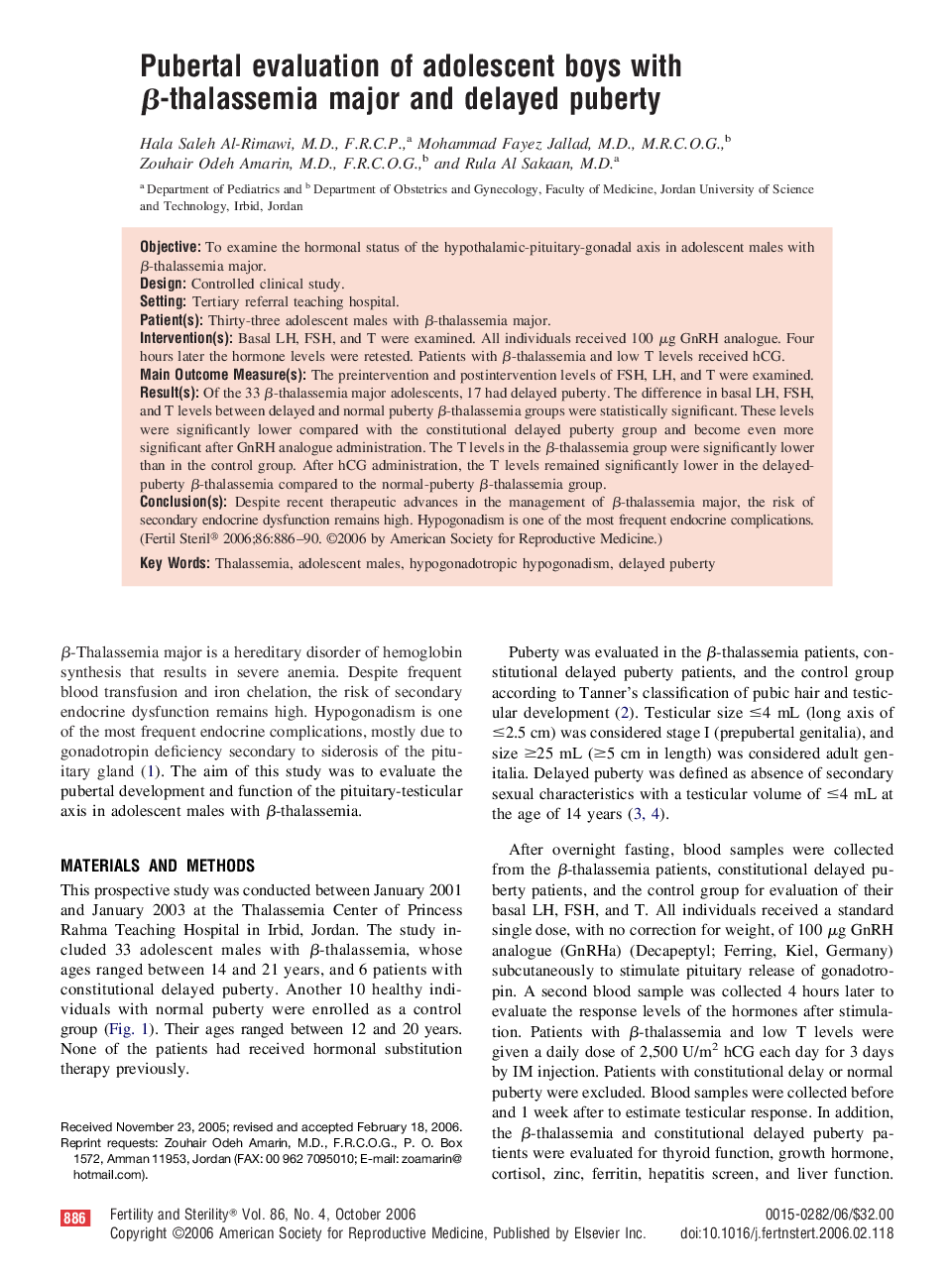| کد مقاله | کد نشریه | سال انتشار | مقاله انگلیسی | نسخه تمام متن |
|---|---|---|---|---|
| 3940561 | 1253590 | 2006 | 5 صفحه PDF | دانلود رایگان |

ObjectiveTo examine the hormonal status of the hypothalamic-pituitary-gonadal axis in adolescent males with β-thalassemia major.DesignControlled clinical study.SettingTertiary referral teaching hospital.Patient(s)Thirty-three adolescent males with β-thalassemia major.Intervention(s)Basal LH, FSH, and T were examined. All individuals received 100 μg GnRH analogue. Four hours later the hormone levels were retested. Patients with β-thalassemia and low T levels received hCG.Main Outcome Measure(s)The preintervention and postintervention levels of FSH, LH, and T were examined.Result(s)Of the 33 β-thalassemia major adolescents, 17 had delayed puberty. The difference in basal LH, FSH, and T levels between delayed and normal puberty β-thalassemia groups were statistically significant. These levels were significantly lower compared with the constitutional delayed puberty group and become even more significant after GnRH analogue administration. The T levels in the β-thalassemia group were significantly lower than in the control group. After hCG administration, the T levels remained significantly lower in the delayed-puberty β-thalassemia compared to the normal-puberty β-thalassemia group.Conclusion(s)Despite recent therapeutic advances in the management of β-thalassemia major, the risk of secondary endocrine dysfunction remains high. Hypogonadism is one of the most frequent endocrine complications.
Journal: Fertility and Sterility - Volume 86, Issue 4, October 2006, Pages 886–890